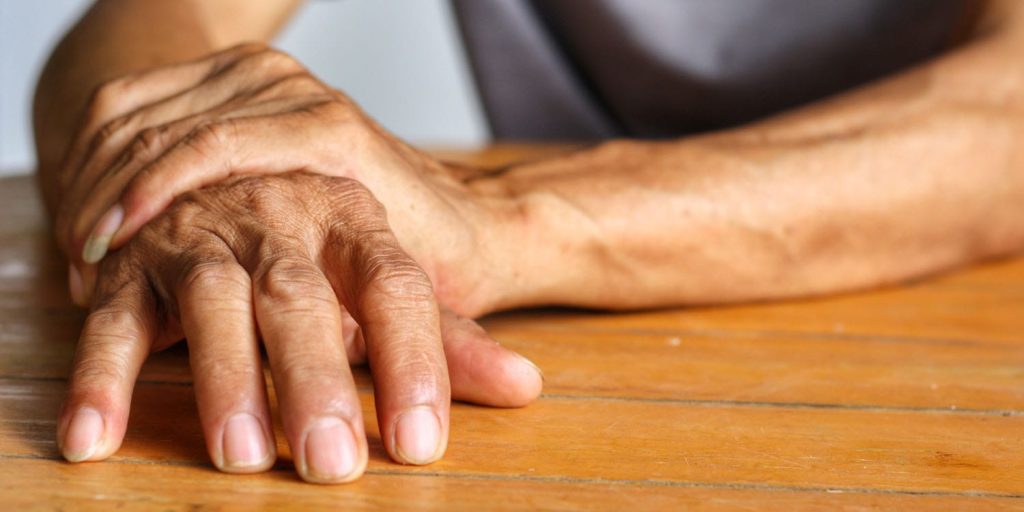Touch, like other senses, is generally thought to decline with age. But this study is the first to show that age-related loss of sensitivity only occurs in hairless skin, such as the tip of the index finger, but not on the hairy cheek or forearm. The authors speculate that the exceptional sensitivity of the cheek throughout life may be due to our evolutionary history as social primates, for whom touch is an important means of communication.
Like most primates, humans have a surprising love for physical contact: Less physical contact leads to higher production of the stress hormone cortisol, suppresses the immune system, and increases heart rate and blood pressure, while physical contact floods the brain with natural opioids, the bonding hormone oxytocin, and the feel-good neurotransmitters dopamine and serotonin.
It’s commonly believed that, like vision and hearing, our sense of touch declines with age. But for those hoping to stave off age-related decline forever, new research has good news: For the first time, it has been shown that loss of touch sensitivity only occurs in areas of the skin that are hairless, but not in hairy areas. The findings: The forefront of aging neuroscience.
“As we age, our sense of touch deteriorates in our hands, but not in our hairy arms or on our cheeks, which are particularly sensitive to touch,” said Dr Jean-Marc Aimonetti, a researcher at the Centre for Psychology and Neuroscience Research in Marseille, France, and corresponding author of the study.
Test Sensitivity
The authors recruited 96 left-handed female volunteers, aged between 20 and 75, and tested the skin sensitivity of three sites: the hairless tip of the right index finger, the right forearm, and the cheek, which are usually covered with a thick layer of hair. The women sat in a quiet room with their eyes closed and wore noise-cancelling headphones to block out any distracting noise.
In the first experiment, subjects had to blindly move the tip of their right index finger over 11 plates with grooves of different spacing, ranging from 3.6 mm to 6 mm wide. Subjects had to indicate whether the grooves were wider or narrower than those of a reference plate that was 4.8 mm wide. Each subject was tested 132 times and given a score for each correct answer. The results confirmed that the sensitivity of tactile spatial exploration of the index finger decreases with age.
In a second, similar experiment, the researchers randomly and incrementally applied 13 different monofilaments (each with its own calibrated force between 0.08 and 75 millinewtons) to the women’s skin. Subjects had to indicate whenever they felt a sense of touch. The experiment ended when subjects made two consecutive errors and could no longer accurately detect the stimuli. This is a proven method that is widely used to measure tactile sensitivity in people, including those with diabetic neuropathy.
Results again confirmed that detection thresholds of the index finger increased linearly with age and that tactile sensitivity decreased across the lifespan.
keep in touch
Surprisingly, however, no such degradation was observed for the cheeks and forearms. For example, the mean forearm detection threshold for the 10 youngest women was 5.6 millinewtons, compared with 5.6 millinewtons for the 10 oldest women. This difference was not statistically significant. Similarly, the mean cheek threshold for the 10 youngest women was 0.9 millinewtons, which was not significantly lower than the mean of 1.1 millinewtons for the 10 oldest women.
Read and download the original article
These results suggest that the cheek is particularly sensitive throughout life – which was surprising because hairless skin typically has a higher density of mechanoreceptors, which determine touch sensitivity, than hairy skin.
“The hands are really important for touch, and our hairy skin is where we often receive caresses from others. This so-called emotional touch actually increases with age, and because humans are social animals, it makes sense that we would preserve this sensitivity,” said Dr Rochelle Ackerley, second corresponding author and Dr Aimonetti’s colleague.
Hair is our friend
The researchers speculate that the preserved tactile sensitivity of the forearms and cheeks is due to the presence of hair, which not only protects the skin but also acts as an antenna to transmit even the weakest mechanical stimuli.
“Hair is our friend. It protects us from germs and tells us which way the wind is blowing. It’s not for nothing that it’s in our most sensitive areas,” Aimonetti explained.
But what can we do ourselves to keep our skin sensitive?
“Research has shown that people who have been exposed to extreme thermal environments throughout their lives, such as the cold of soldiers or the heat of bakers, have a greater reduction in touch sensitivity. This can also be achieved by avoiding the negative effects of lifestyle habits that damage the skin, such as alcohol, tobacco and sun exposure, as well as other factors such as pollution,” Ackerly said.


